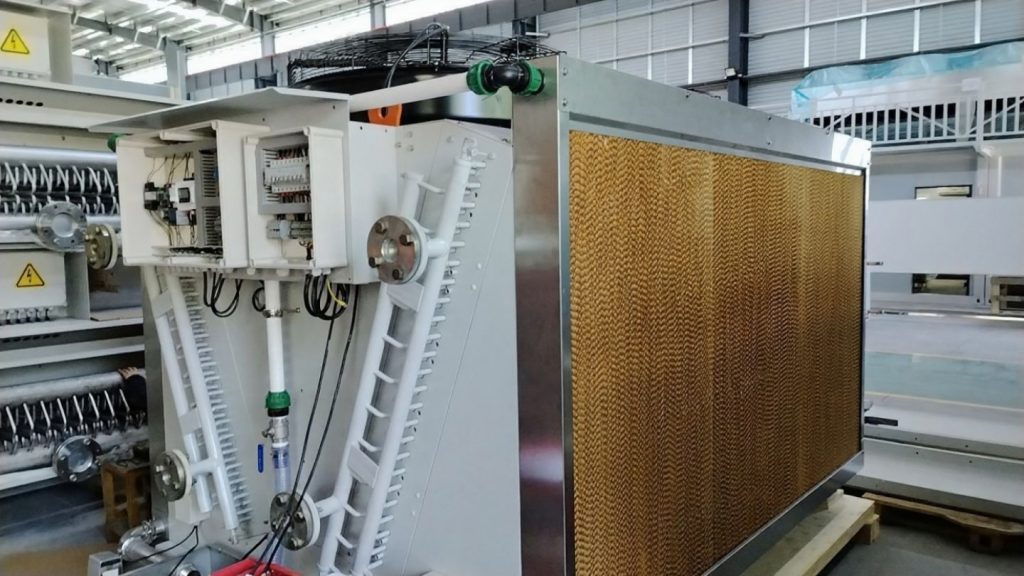The use of cellulose pads in adiabatic cooling towers is a deliberate and common engineering choice, driven by a balance of performance, cost, and environmental factors.
Here are the key reasons for using cellulose pads, broken down by their advantages and the trade-offs involved.
Primary Reasons for Using Cellulose Pads
1. Superior Evaporative Cooling Efficiency
This is the most important reason. Cellulose pads excel at the core function of an adiabatic system: cooling the air through evaporation.
- High Wicking Ability: The natural cellulose fibers are highly absorbent (hydrophilic). They actively pull water into their structure, ensuring the entire pad surface is thoroughly wet. This maximizes the water-to-air contact area.
- Large Surface Area: The manufacturing process creates a fluted, corrugated structure. This design packs an enormous amount of surface area into a small volume, providing countless microscopic sites for evaporation to occur efficiently.
- Approach to Wet-Bulb: Due to this efficiency, air passing through a well-maintained cellulose pad can be cooled to within 80-85% of the ambient wet-bulb temperature—which is the theoretical limit for evaporative cooling.
2. Optimal Balance of Airflow and Water Holding
Cellulose pads are engineered to have a specific porosity. They hold enough water to ensure continuous evaporation but are open enough to allow air to pass through with relatively low static pressure drop. This means the system fans don’t have to work as hard to pull air through, saving energy compared to some denser alternatives.
3. Cost-Effectiveness
- Lower Initial Cost: Cellulose pads generally have a lower upfront cost compared to many synthetic alternatives like rigid PVC or composite media. This makes them an attractive option for initial installation.
4. Environmental Sustainability
- Made from Renewable Resources: Cellulose pads are typically made from sustainably harvested aspen or other hardwood fibers.
- Biodegradable: At the end of their lifespan, cellulose pads will break down naturally in a landfill, unlike plastic pads which can persist for centuries.
Trade-Offs and Considerations (The “Why Not”)
While the reasons above are compelling, the choice to use cellulose also comes with responsibilities and drawbacks that must be managed.
1. Limited Lifespan and Durability
- Organic Material: Being made of wood fiber, they are susceptible to biological degradation (rot), mineral clogging (scale) from hard water, and physical breakdown over time.
- Typical Lifespan: A cellulose pad typically lasts 2-5 years before it needs replacement, whereas high-quality PVC pads can last 5-10 years or more.
2. Maintenance Requirements
- Prone to Fouling: The organic nature and porous structure make them a perfect breeding ground for algae, bacteria, and mold if not properly maintained.
- Water Quality Dependency: They are highly sensitive to water hardness. Dissolved minerals in the water can quickly clog the pores, reducing efficiency and airflow. This necessitates a more rigorous water treatment regimen.
3. Potential for Corrosion
As cellulose pads age and begin to break down, they can release very mild organic acids. In the presence of moisture, these acids can contribute to the corrosion of metal components nearby, such as the sump tank or the unit’s framework.
